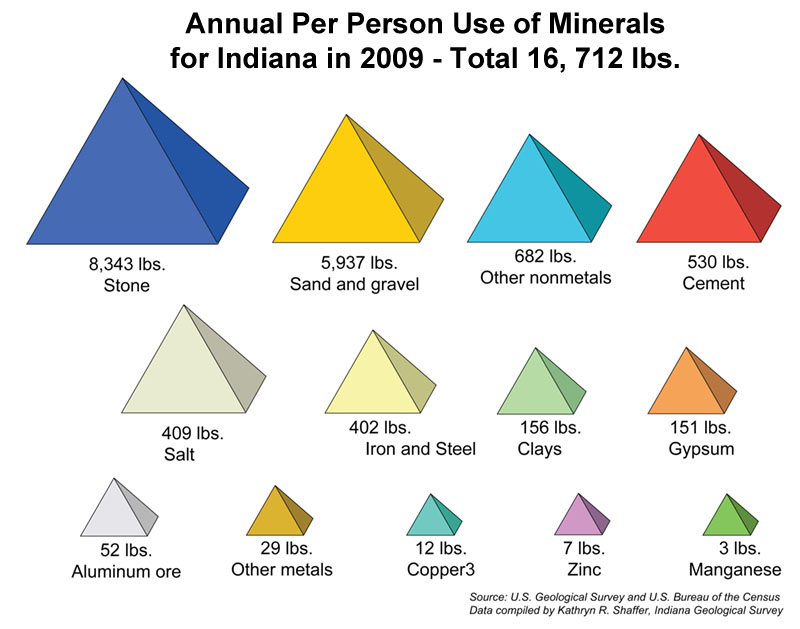
Figure 2.
Per person use of geological raw materials
Our modern world requires immense amounts of raw materials. Most of those raw materials must be grown or mined from the Earth. Rocks were one of the earliest tools used by man and we still use crushed stone to build and operate modern society. Per person use of geological raw materials is shown in Figure 1. In Indiana, there is enough stone used to average 8,343 lbs. per person per year. In addition, 5,937 lbs. of sand and gravel are used and 151 lbs. of gypsum. Large amounts of many other mineral resources are also necessary. For example, in a lifetime, the average Hoosier will use 1.3 million lbs. of mined resources. Fortunately, Indiana and surrounding states host huge deposits of excellent limestone or dolomite bedrock to make crushed stone products for all. Several rock units are mined in open pit and underground mines in 41 counties. Sand and gravel is mined in another 45 counties (see Sand and Gravel page). Nearly all of Indiana's counties have some type of aggregate operation (Figure 2).
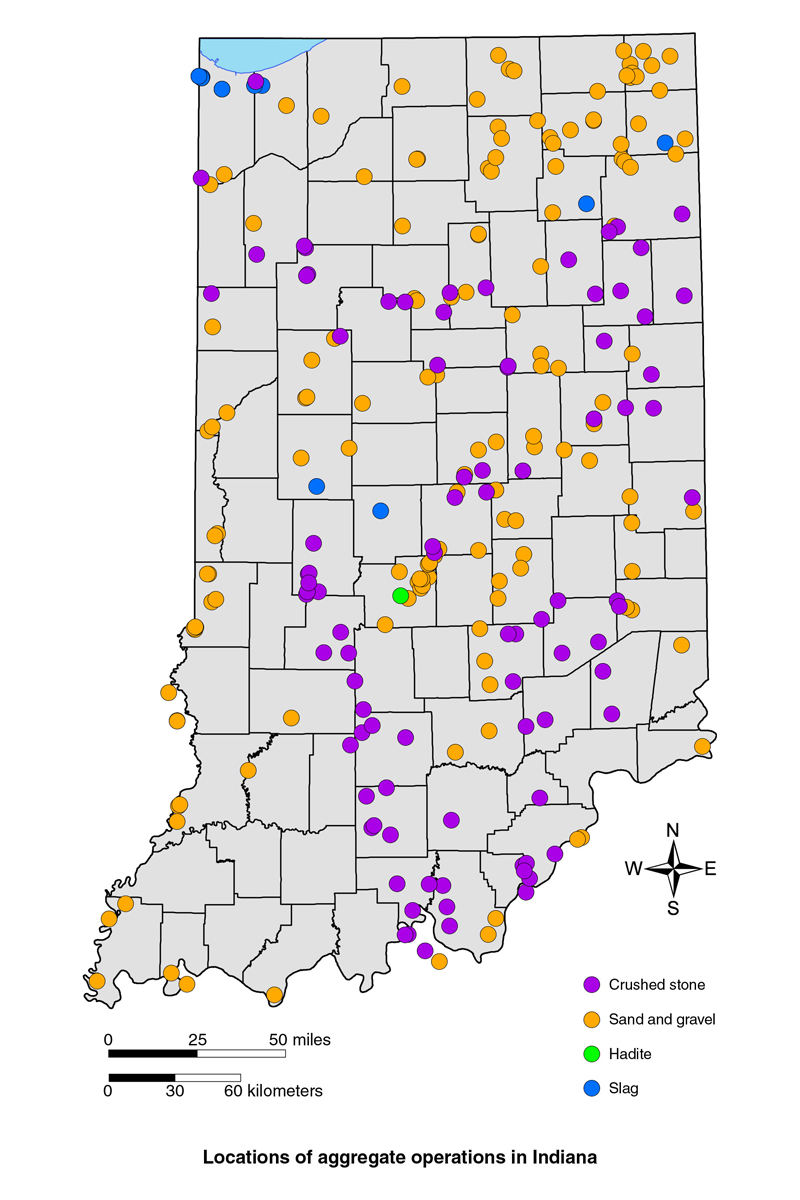
Figure 2.
Map showing aggregate operations throughout Indiana
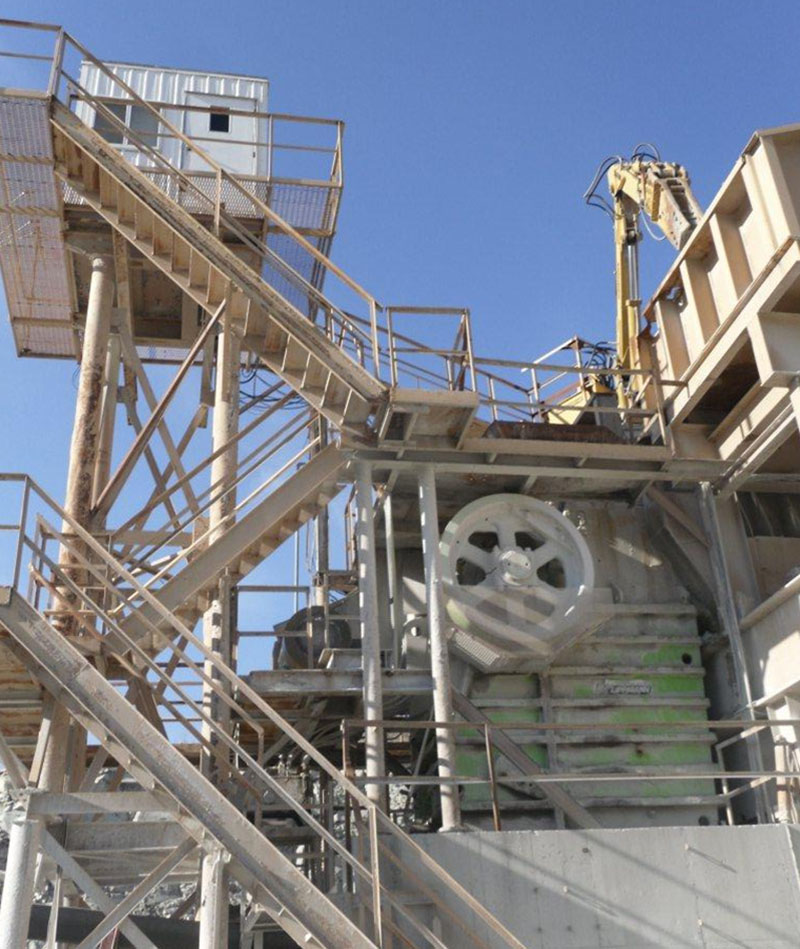
Figure 3.
Crushing machines
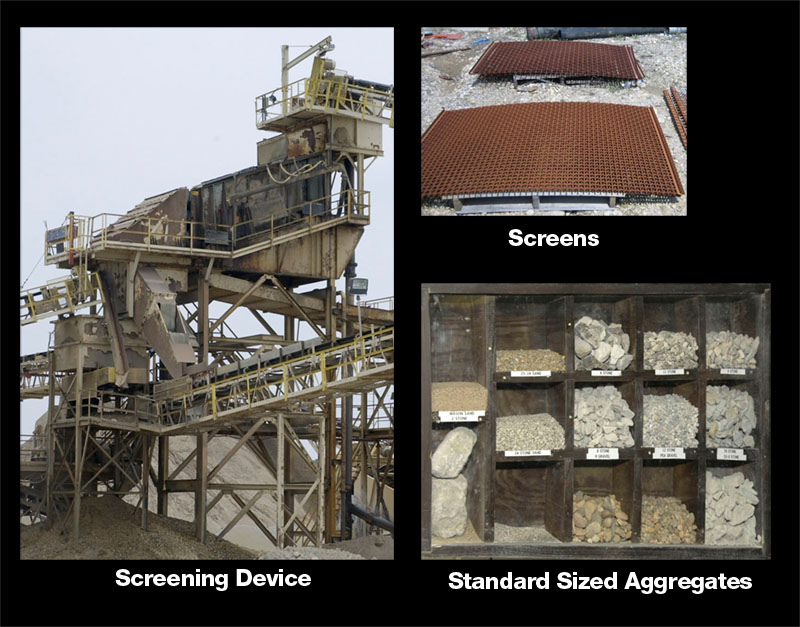
Figure 4.
screening
Stone is tested before mining begins. Geologists look at maps, drill cores, analyze rock, and locate promising deposits. Pure beds of limestone and dolomite are common in Indiana but the beds must meet stringent engineering specifications. Once a mine is located, unconsolidated dirt, sand, and unusable rocks, known as overburden, are removed. Large diameter holes are drilled in exact patterns, filled with explosive materials, and the rock is blasted into smaller pieces. The blasted rock is loaded into huge haul trucks and carried to big crushing machines(Figure 3). Several stages of size reduction and screening(Figure 4). are usually required to produce exact size and shapes of the rock as required (for state highway projects) by strict state-enforced specification. Tests are required on almost all crushed stone. The sized stone is moved by conveyor to large storage piles (Figure 5) until it is loaded out, usually onto trucks for transport to job sites.
A lot of crushed stone is used to make roads. Different roads require several types of aggregate. Roads require good engineering and good material. Crushed stone is also mixed with cement, sand, and water to make concrete. A large array of concrete formulas requires stone of the proper size, shape, and purity. Certain impurities, such as chert (a variety of quartz), pyrite, or clay minerals must be kept to a very low amount.
Mines should be located near construction sites because transport costs can become very high. Many crushed stone mines are near cities or transport routes. After mining, many companies reclaim their quarries for development, nature preserves, recreation areas, or a number of useful purposes after mine activities have ceased (Figure 6). In the Indianapolis area and around other cities, reclaimed mines are prime residential, office building or recreation sites.
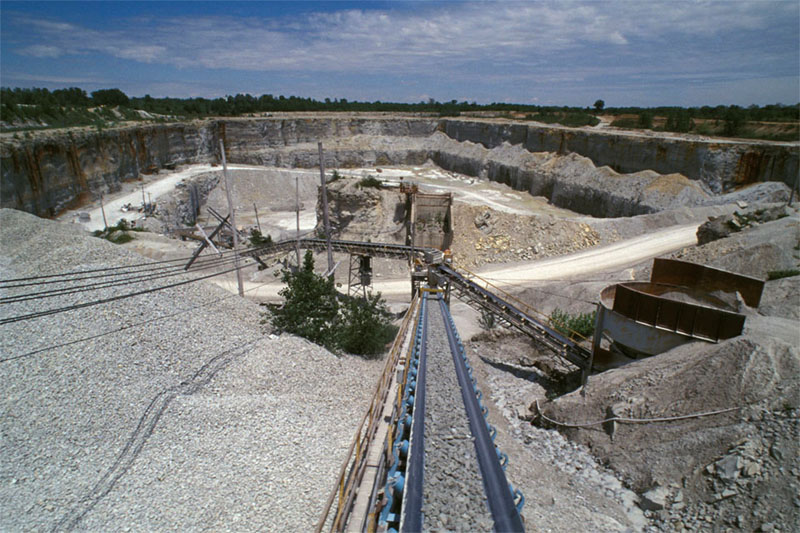
Figure 5.
Overview of a large, modern, crushed stone quarry showing a conveyer belt.
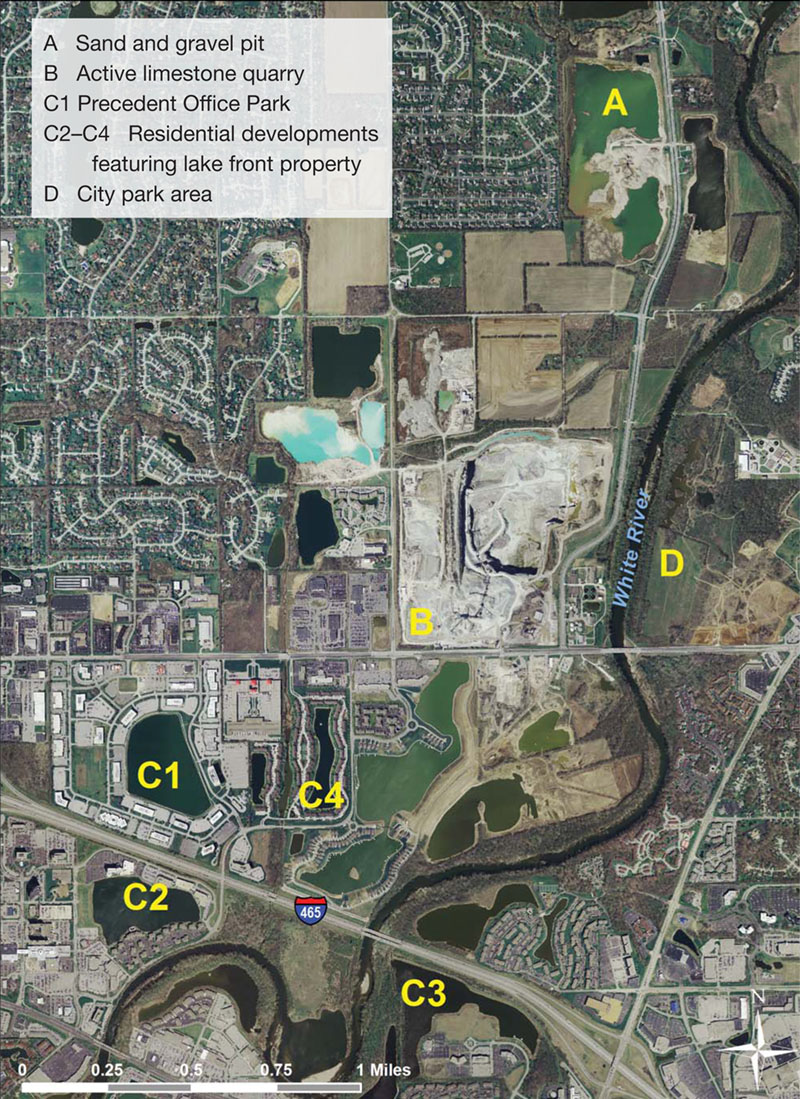
Figure 6.
After mining has ceased, many sites are reclaimed for development as nature preserves, recreation areas, city parks or for a number of other useful purposes.


